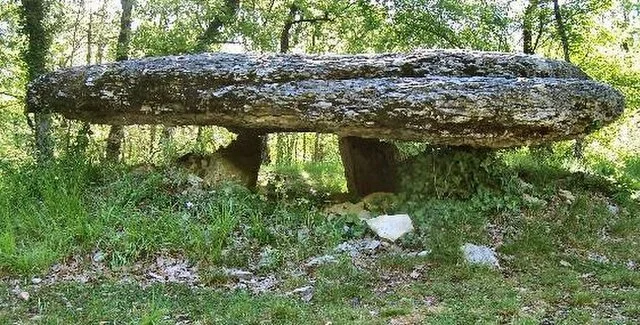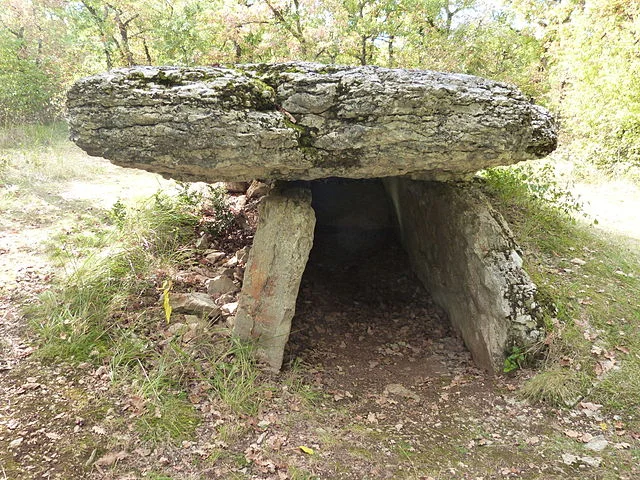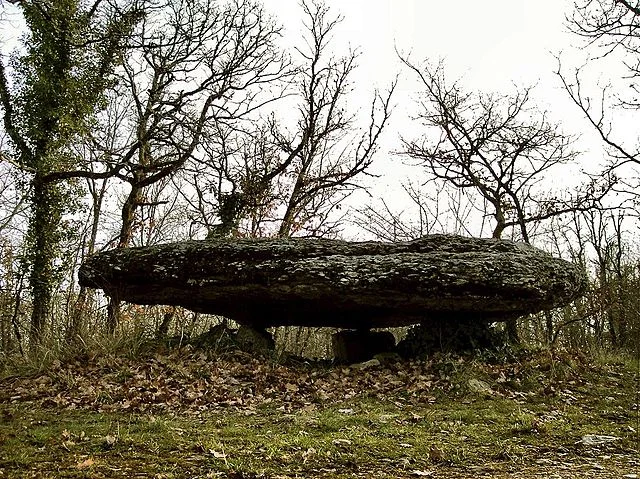The Dolmen de Peyco Levado is a megalithic structure located in the region of Galicia, Spain. It belongs to the group of dolmens found in the Iberian Peninsula, which are important examples of prehistoric burial practices. These dolmens date back to the Late Neolithic or Early Bronze Age, approximately 2500 BC to 1500 BC.
Get your dose of History via Email
Structure and Design

The Dolmen de Peyco Levado is classified as a passage grave. It consists of a large capstone supported by upright stones, forming a chamber. The burial chamber is typically rectangular, with a narrow entrance aligned with the structure’s longer axis. The dolmen’s passageway leads into the chamber, where human remains and artifacts have been found, suggesting its use for communal burial rituals.
The capstone is one of the notable features of the dolmen, as it is large and flat. It weighs several tons, which demonstrates the impressive engineering capabilities of the prehistoric builders. The chamber is constructed with carefully placed stones, ensuring its stability over thousands of years.
Location and Surroundings

The Dolmen de Peyco Levado is situated in a rural area, surrounded by hills and forests. The site is part of a larger megalithic complex in the region. Other dolmens are scattered throughout the region, offering insight into the widespread nature of these burial sites during the Neolithic period. Archaeologists believe that such locations were selected for their symbolic or ritual significance, with alignment to astronomical events or natural features.
The site has been preserved and is accessible for study and public viewing. However, the dolmen’s exact cultural and religious significance remains uncertain. Like many megalithic monuments, it likely served both as a burial place and as a symbol of community identity.
Archaeological Findings

Archaeological excavations at the Dolmen de Peyco Levado have yielded human remains, pottery, and tools. The burial remains indicate that the site was used for multiple interments over time. The presence of pottery and tools suggests that the people who used the dolmen were engaged in farming and other subsistence activities. The artifacts found at the site provide valuable insight into the daily life and customs of the people who constructed and used the dolmen.
The skeletal remains found in the chamber were likely placed according to a particular burial ritual. Some studies indicate that bodies may have been exposed to the elements before being interred, a common practice in some megalithic cultures. This suggests complex funeral rites and an organized social structure.
Cultural Context

The Dolmen de Peyco Levado is part of the broader megalithic tradition in the Iberian Peninsula, which includes other famous sites such as the Dolmen of Dombate and the Dolmen of Menga. These sites share similar architectural characteristics, indicating a common cultural practice of constructing monumental stone structures for funerary purposes.
The construction of these dolmens reflects a society with advanced knowledge of stoneworking and engineering. It also suggests a belief system focused on the afterlife, as the use of megalithic structures for burials typically indicates a ritualistic and religious context. The monuments likely served as focal points for social and religious gatherings.
Conclusion
The Dolmen de Peyco Levado is an important example of prehistoric architecture in Galicia, Spain. Its design and location reflect the sophistication of the society that built it. The archaeological findings at the site offer valuable insights into the burial practices, daily life, and religious beliefs of the people who lived in the Iberian Peninsula during the Late Neolithic or Early Bronze Age. As part of a broader megalithic tradition, the Dolmen de Peyco Levado helps us understand the cultural and technological advancements of prehistoric societies in Western Europe.
Source:

